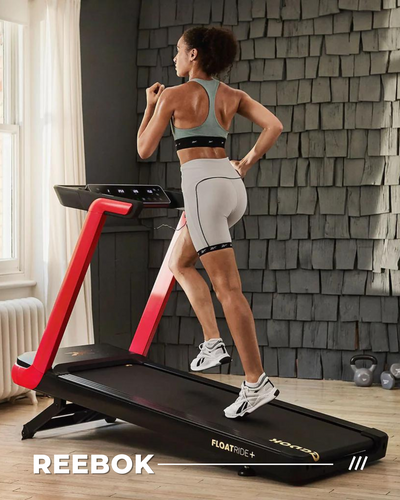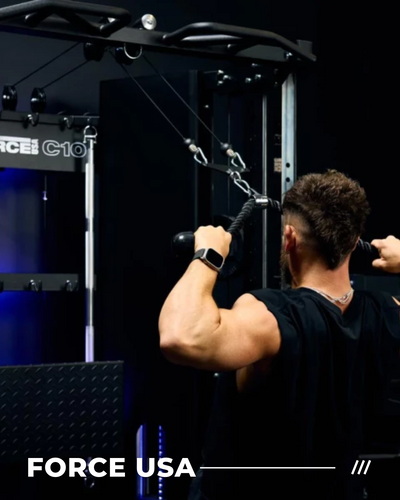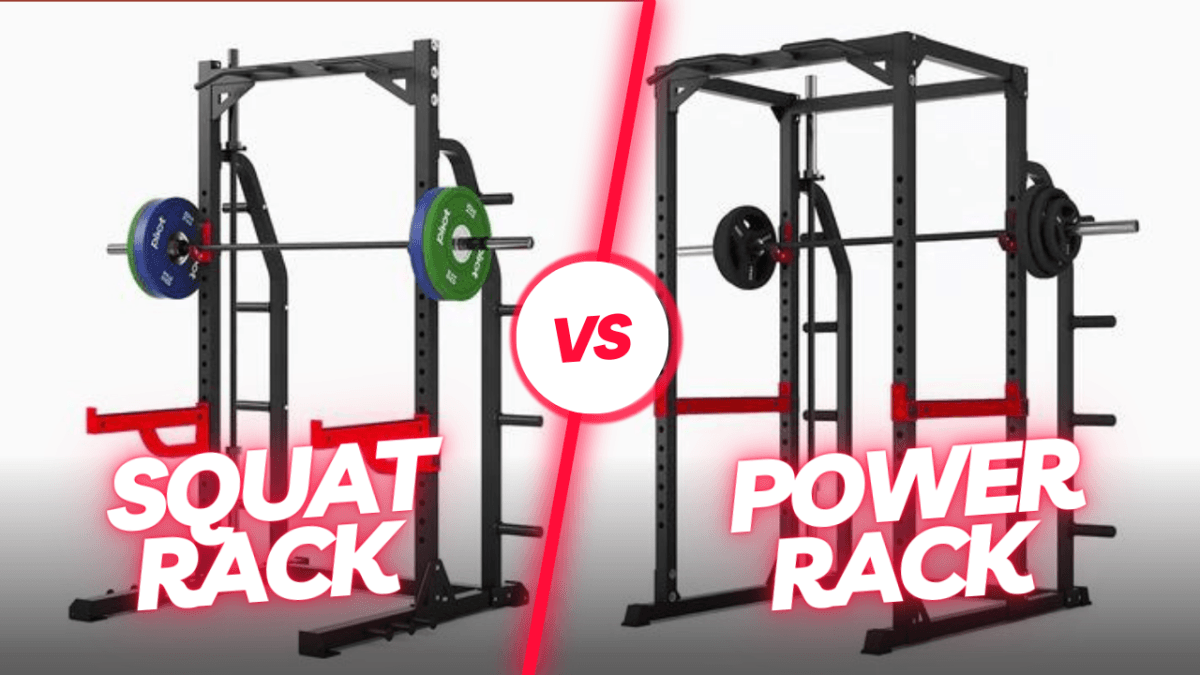When deciding between weightlifting racks and stands for home use, it’s useful to know the difference between different weight racks and their uses so that you can choose the equipment that best suits your needs. There are many kinds of racks and stands for weightlifting, including squat racks, squat stands, power racks, half racks, full racks, heavy racks, combo racks, and multi trainers.
With so many options to choose from, the best way to decide which rack is best for you is to determine which piece of equipment will do the best job for the way you plan to use it. Learn the differences to look out for between weightlifting racks and learn about the features to consider when debating the advantages of squat racks vs. power racks.

Squat Racks
A squat rack is a general term used for a rack made for squatting. There are several different types of squat racks, but when most people say squat rack, they are usually referring to an incline squat rack, squat stand, or a half-rack. These racks are generally lighter weight in build and have two vertical beams.
A standard squat rack has two upright posts that are connected to a three-beam base. For certain types of squat racks, the two upright posts are attached at the top by a bar which can be used for doing chip ups and pull ups. On other types of squat racks, such as squat stands or incline racks, the two upright posts have two horizontal bars that can be used for doing dips. On a squat rack, you can do squats and bench presses, along with other simple lifting exercises.
Squat stands come with safety arms, so for lighter weights, you may not need a spotter to watch you lift and ensure your safety. They also have J-cups for racking barbells that attach to the outside of the two vertical posts at varying heights–most of the time these heights are adjustable as well.
Check out some of our recommendations for entry-level squat racks, such as the Pivot HR3240 Heavy Duty Econ Half Rack, or the Pivot XR6226 Commercial Foldable Wall Rack.
For advanced squat racks, we suggest the Pivot HM3310 Deluxe Smith Machine or the Pivot Fitness XR6230 Commercial Heavy Duty Half Rack.
Here are a few pros and cons of a squat rack in the debate of squat racks vs. power racks:
Pros:
- Less expensive than most power racks
- Tend to take up less floor and head space
- Flexible movement and provide more space for workouts
- Easier to assemble and use by one person
- Great entry point for new weightlifters
Cons:
- Unsuitable for very heavy weights
- Not as safe as power racks for dropping barbells
- Less accessory options and customization
- May still need to have a spotter when lifting
- May need to upgrade for heavier weights later

Power Racks
A power rack, also sometimes referred to as a power cage, full rack, heavy rack, combo rack, or a multi-trainer, consists of four vertical beams connected with crossbeams at the top. Some power racks have six beams along with additional horizontal beams and additions.
Power racks tend to take up more space than squat racks, since they are the equivalent of two squat racks combined. They have two J-cups to rack barbells at a variety of heights, along with two horizontal safety catches (supports) in the form of straps, rails, or pins that run along the side of the rack on the inside. For this reason, power racks are easier to use than squat racks without having a spotter.
The top of a power rack is connected by bars to form a sort of heavy-duty “cage,” which is extremely secure and stable. Power racks can double as pull-up or chin-up bars, along with a variety of weightlifting configurations for heavy lifters, bodybuilders, and strongmen.
Check out some of our recommendations for entry-level power racks, such as the Pivot HR3260 Heavy Duty Power Rack, the Pivot HR3262 HD Power Rack W/ Storage, or the Pivot XAR6630 Athletic Power Rack.
For advanced power racks, we suggest the Pivot XAR6620 Athletic Combo Rack, the Bodycraft RFT Rack Functional Trainer, or the Force USA X20 Pro Multi Trainer (Full Rack).
Here are a few pros and cons of a power rack in the debate of squat racks vs. power racks:
Pros:
- More features and optional attachments (bars, pulleys, etc.)
- Can handle holding heavier weights
- Very durable compared to lighter racks
- Safer to use without a spotter
- “Cage” offers most safety from falling barbells
Cons:
- Takes up more space and has a larger footprint
- Usually more expensive than other racks
- Some power racks require floor attachments
- Reduced movement when working out withing the cage

Squat Rack Vs. Power Rack – Space
With only two vertical posts compared to the four posts on a power rack, squat racks tend to be smaller and take up less floor space, making it a clear winner for smaller homes or apartments. While there are smaller and shorter power racks, they are by nature larger than squat racks.
There are even wall-mounted folding racks and wall mounted non-folding racks for people who are really looking to save space and still get a great workout.
In terms of space, squat racks have a slightly smaller footprint and are the winners when it comes to saving space in a home gym or small area. If you have more space to work with, then by all means consider purchasing a power rack to take advantage of its full functionality.
Winner: Squat Rack
Squat racks suit home gyms and small gyms better than power racks because they provide a reliable way to lift safely for most drills while still saving space.

Squat Rack Vs. Power – Rack Price
Squat racks are cheaper but cannot handle extremely heavy weights. If you plan on lifting very heavy weights such as for bodybuilding or sharing the rack with others, then a power rack is best.
If the rack is only used by you or you and a partner or friend at home, then a squat rack is a great option. You can purchase a squat rack from a reliable brand starting at only a few hundred dollars and they tend to be no more expensive than $1,500-$2,000.
While most weightlifters would love to build the home gym of their dreams with a huge power rack, sometimes that is not always in the budget. If you are on a budget and want to have a home weightlifting rack, then a squat rack or half-rack is a great option!
Winner: Squat Rack
Squat racks are less expensive than power racks while still offering great functionality, durability, and saving space in an apartment or condo.

Squat Rack Vs. Power Rack – Workouts
When it comes to the kind of workouts you can do and the weights you can lift, a power rack tends to offer more features, flexibility, and customization than most squat racks. A power rack also offers more stability for heavier weights.
For those that want the flexibility to perform exercises on the inside or outside of the rack, choose a power rack. The build of the power rack usually includes J-hooks that hold the barbell on both the inside and outside of the cage–offering flexibility to lift inside the rack or outside the rack as desired.
Additionally, power racks have more vertical beams and plate storage options, providing more options for lifting than a standard squat rack. The upper frame of a power rack can be used for other exercises like pull ups, whereas a squat rack may not have an upper frame stable enough for such exercises.
Winner: Power Rack
Power racks are larger, more durable, and offer more options for add-ons and customization, allowing the user to complete a variety of exercises.

Squat Rack Vs. Power Rack – Safety
When it comes to lifting weights and performing exercise, safety is paramount. It’s important to test yourself and your abilities, but to do so in a way that does not leave you injured or in pain.
The biggest difference in safety features for most squat racks vs. power racks is how you release a barbell. In a squat rack, if you need to dump the bar, it goes down to the floor and could potentially hit you, your foot, other weights, or even other pieces of equipment.
In terms of safety, power racks have upper frames or crossbeams connected to the vertical beams that prove additional stability. This type of rack is sturdier for pull ups and chin ups compared to squat racks or half racks with single horizontal bars. Power racks also have adjustable height inner safety bars or straps for resting a barbell, whereas squat bars do not.
Winner: Power Rack
Power racks have safety pins, straps, or bars in the middle of the rack, so if you need to bail the bar, there is a safe way to do so without potentially injuring yourself or others.

Which Should You Buy?
The primary differences in choosing squat racks vs. power racks are the number of vertical uprights and the size of the rack. Squat racks have two vertical upright beams with a horizontal bar across the top and a smaller footprint, whereas power racks have four or six vertical beams connected by two horizontal bars at the top.
When it comes to choosing which weightlifting rack best suits your needs, there are a lot of things to consider. Will you use it at home? Will you have a spotter? How heavy will you be lifting? Does size or space matter?
For most frequent lifters and commercial gyms, a power rack is a dream come true because there is almost no drill or exercise that it cannot handle.
That being said, most people will be just fine with a squat rack or half-rack that meets their needs. Unless you are following a rigorous weightlifting routine with multiple steps or lifting very heavy weights, a squat rack is a suitable option for most people.







